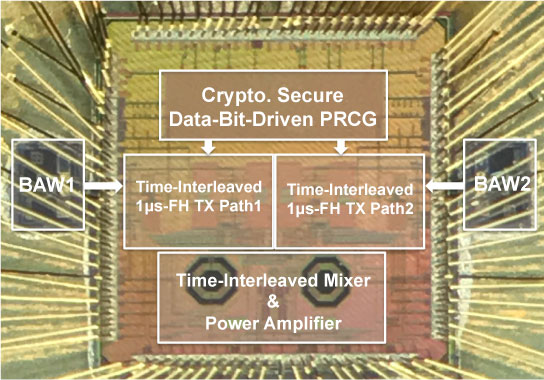11/07/2018
Sabancı University Faculty of Engineering and Natural Sciences Electronic Engineering 2009 graduate Rabia Tuğçe Yazıcıgil developed a novel type of transmitter at Massachusetts Institute of Technology (MIT), where she continues her studies. Device uses ultrafast “frequency hopping” and data encryption to protect signals from being intercepted and jammed. This new technology protects wireless data from hackers.

The initial applications of this technology could involve securing smart meters that read home utilities, control heating, or monitor the grid.
Yazıcıgil: “More seriously, perhaps, the transmitter could help secure medical devices, such as insulin pumps and pacemakers, that could be attacked if a hacker wants to harm someone. When people start corrupting the messages [of these devices] it starts affecting people’s lives."

Devices connected around the world form an “internet of things” that includes medical devices, vehicles, and smart household technologies. By 2020, experts estimate that the number of these devices will rise to more than 20 billion, all uploading and sharing data online. But those devices are vulnerable to hacker attacks that locate, intercept, and overwrite the data, jamming signals and generally wreaking havoc. One method to protect the data is called “frequency hopping,” which sends each data packet, containing thousands of individual bits, on a random, unique radio frequency (RF) channel, so hackers can’t pin down any given packet. Hopping large packets, however, is just slow enough that hackers can still pull off an attack.
Now, Sabancı University Faculty of Engineering and Natural Sciences Electronic Engineering 2009 graduate Rabia Tuğçe Yazıcıgil has developed a novel transmitter at MIT that frequency hops each individual 1 or 0 bit of a data packet, every microsecond, which is fast enough to thwart even the quickest hackers.
The transmitter leverages frequency-agile devices called bulk acoustic wave (BAW) resonators and rapidly switches between a wide range of RF channels, sending information for a data bit with each hop. In addition, the researchers incorporated a channel generator that, each microsecond, selects the random channel to send each bit. On top of that, the researchers developed a wireless protocol — different from the protocol used today — to support the ultrafast frequency hopping.
Rabia Tuğçe Yazıcigil, a postdoc in the Department of Electrical Engineering and Computer Science and first author on a paper describing the transmitter, which is being presented at the IEEE Radio Frequency Integrated Circuits Symposium, said: “With the current existing transmitter architecture, you wouldn’t be able to hop data bits at that speed with low power. By developing this protocol and radio frequency architecture together, we offer physical-layer security for connectivity of everything." The initial applications of this technology could involve securing smart meters that read home utilities, control heating, or monitor the grid.
Yazıcıgil continues: “More seriously, perhaps, the transmitter could help secure medical devices, such as insulin pumps and pacemakers, that could be attacked if a hacker wants to harm someone. When people start corrupting the messages [of these devices] it starts affecting people’s lives."
Co-authors on the paper are Anantha P. Chandrakasan, dean of MIT’s School of Engineering and the Vannevar Bush Professor of Electrical Engineering and Computer Science (EECS); former MIT postdoc Phillip Nadeau; former MIT undergraduate student Daniel Richman; EECS graduate student Chiraag Juvekar; and visiting research student Kapil Vaidya.




